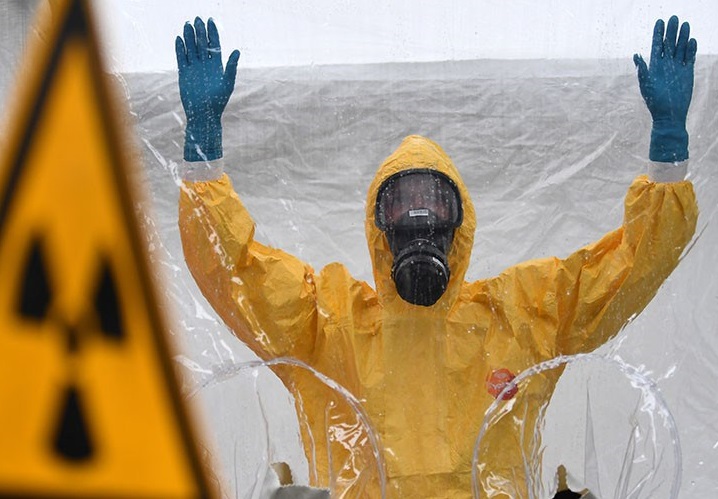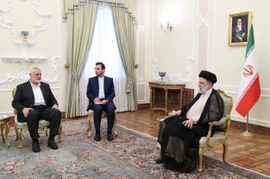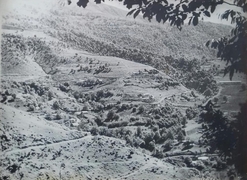Canada will help Kazakhstan launch a radionuclide and gas detection facility capable of monitoring nuclear test explosions within the Central Asian region, to be the first of its kind.
Under a memorandum of understanding signed this week, Canada will provide Kazakhstan with $1.2 million worth of scientific equipment to help build its nuclear detection capacity and contribute to the International Monitoring System (IMS), which monitor the planet for any signs of a nuclear explosion.
“The new station, which Canada is going to introduce, is aimed at monitoring the atmosphere, and based on the analysis of emissions we will be able to identify the cause and nature of any explosion that occurred within a radius of 5,000 kilometers; that is, the entire region of Central Asia will be covered,” said Bakytzhan Dzhaksaliyev, Kazakhstan’s deputy energy minister after signing the document on November 29.
Currently there are over 335 monitoring facilities around the world that form the IMS. Operating under the framework of the Comprehensive Nuclear-Test-Ban Treaty (CTBT), these stations are meant to monitor, and ultimately limit, the ability of any country developing nuclear weapons.
The current systems in place cover about 90 percent of earth, but have excluded Central Asia. The Kazakhstani facility would bring the region into the IMS fold. Collected data will be transmitted immediately to the IMS headquarters in Vienna, which will take preventive measures in case of possible threats.
Astana has not yet decided where the facility will be located in the country, but has narrowed the choices down to a National Nuclear Center laboratory complex in Kurchatov, located in northeastern Kazakhstan, and Semipalatinsk, better known as “The Polygon” and what was the Soviet Union’s largest nuclear testing site.
“We plan to open the station by the end of 2018. After signing the memorandum, we need to transfer documents and train our specialists to service the station. This takes time,” Dzhaksaliyev said Wednesday. The National Nuclear Center will operate the new station, which is funded by the central government.
Earlier this fall, Germany’s nuclear safety agency reported that between September 29 and October 9 very low levels of ruthenium-106, a radioactive isotope, were detected at six monitoring stations in Germany, along with others in Austria, Switzerland and Italy. Ecologists from France’s detection center IRSN said the release of ruthenium-106 originated somewhere in Russia or Kazakhstan.
Kazakhstan denied information about a possible radioactive leak, saying that there were no man-made accidents within the country.
“Yes, we have some research reactors, but if it was an accident at some nuclear fuel cycle facility, then there would be not only ruthenium [in the atmosphere],” Asan Aidarkhanov, a deputy director at the Institute of Radiation Safety and Ecology, said.
These doubts around Kazakhstan have dissipated after Russian Meteorological Service finally confirmed on November 21 that it had recorded the release of “extremely high contamination” of the radioactive isotope Ruthenium-106 in the southern Urals region in late September. The largest concentrations were detected near the Mayak facility, owned by state-run Rosatom, Greenpeace Russia reported.
Astana believes that the new monitoring station will be another contribution of Kazakhstan to nuclear safety and global disarmament. While Kazakhstan ranks near the top of the world’s list of countries possessing the most nuclear material, such as uranium, nuclear security has always been a top priority for the government.
Energy-rich Kazakhstan is a staunch supporter of global nonproliferation efforts. It remains a member of the Nuclear Non-Proliferation Treaty, the Comprehensive Test Ban Treaty and the Central Asian Nuclear Weapon Free Zone, all which promote nuclear disarmament, non-proliferation, control, accounting and physical security of nuclear material.
After the collapse of the USSR in 1991, Kazakhstan was left with its largest repository of nuclear material. Despite the temptation to keep the newfound republic stockpiled and armed with nuclear weapons, President Nursultan Nazarbayev renounced nuclear defense capabilities and closed down the Semipalatinsk nuclear test site on August 29, 1991.







 Azerbaijan officially unveiled the logo for the upcoming 29th session of the Conference of the Parties to the United Nations Framework Convention o...
Azerbaijan officially unveiled the logo for the upcoming 29th session of the Conference of the Parties to the United Nations Framework Convention o...
 Iran's senior military leaders described the drone and missile attack on Israel on April 14 night as “successful".
Iran's senior military leaders described the drone and missile attack on Israel on April 14 night as “successful".
 Iranian Foreign Ministry Spokesperson Nasser Kanani warned of “geopolitical rivalries”, commenting on a recent high-level meeting between Armenia, ...
Iranian Foreign Ministry Spokesperson Nasser Kanani warned of “geopolitical rivalries”, commenting on a recent high-level meeting between Armenia, ...
 Iran's President Ebrahim Raisi extended condolences to the Chairman of the Political Bureau of the Palestinian Hamas group, Ismail Haniyeh, followi...
Iran's President Ebrahim Raisi extended condolences to the Chairman of the Political Bureau of the Palestinian Hamas group, Ismail Haniyeh, followi...



